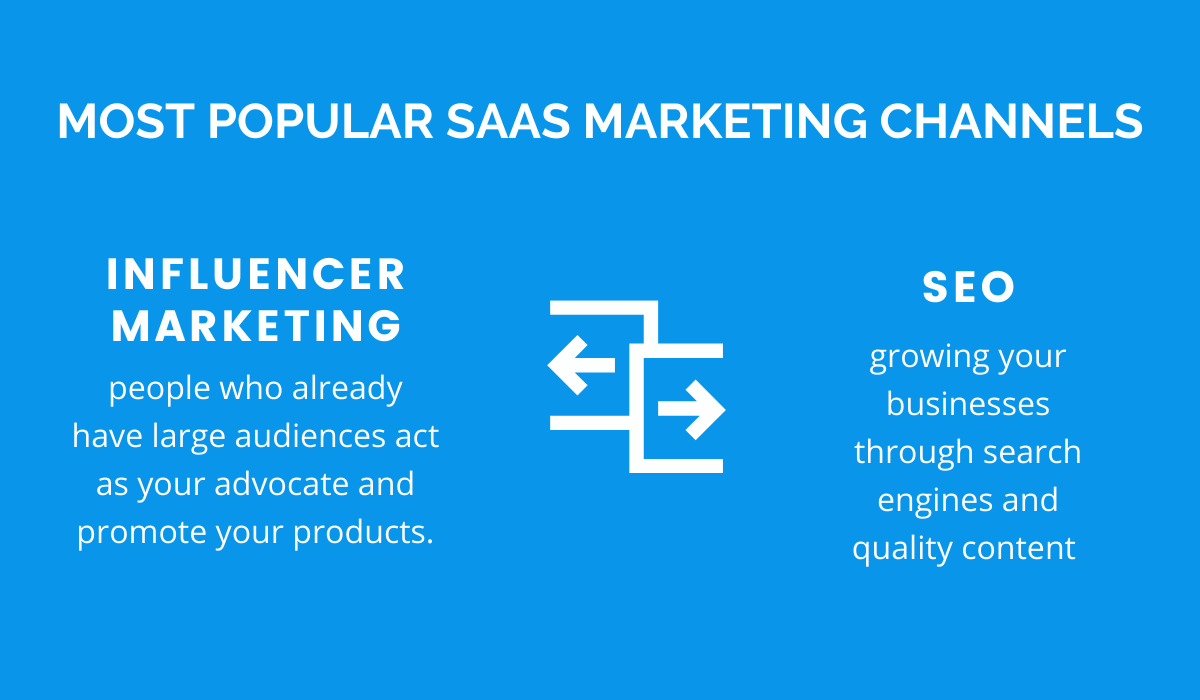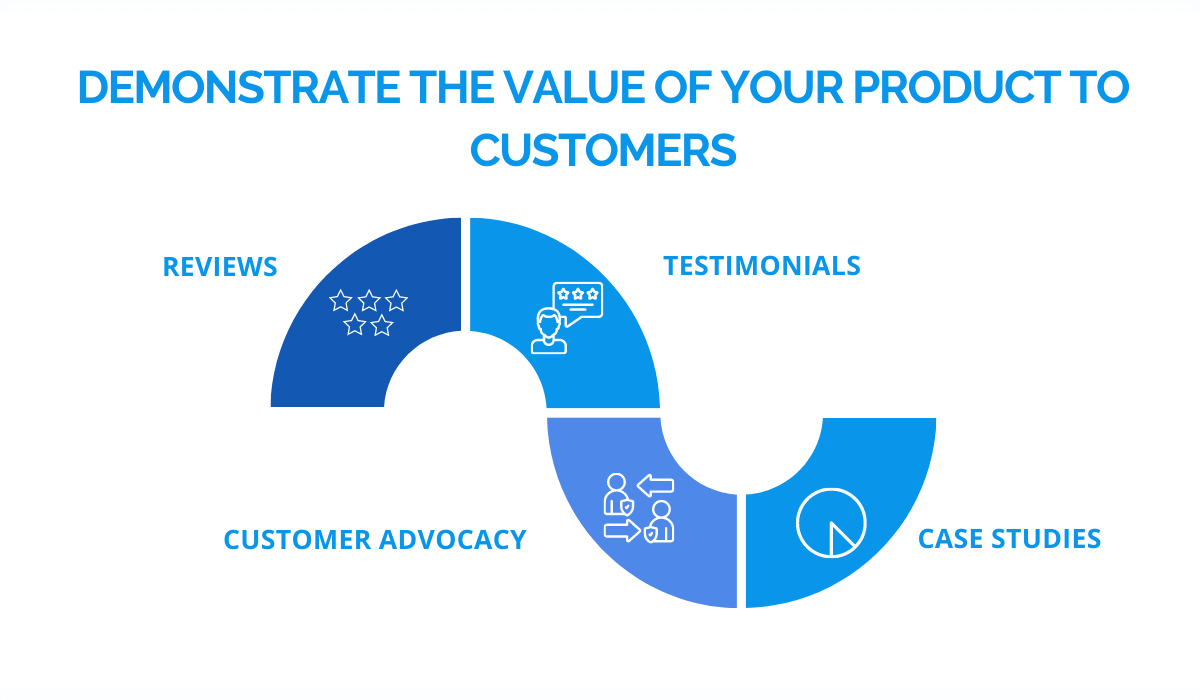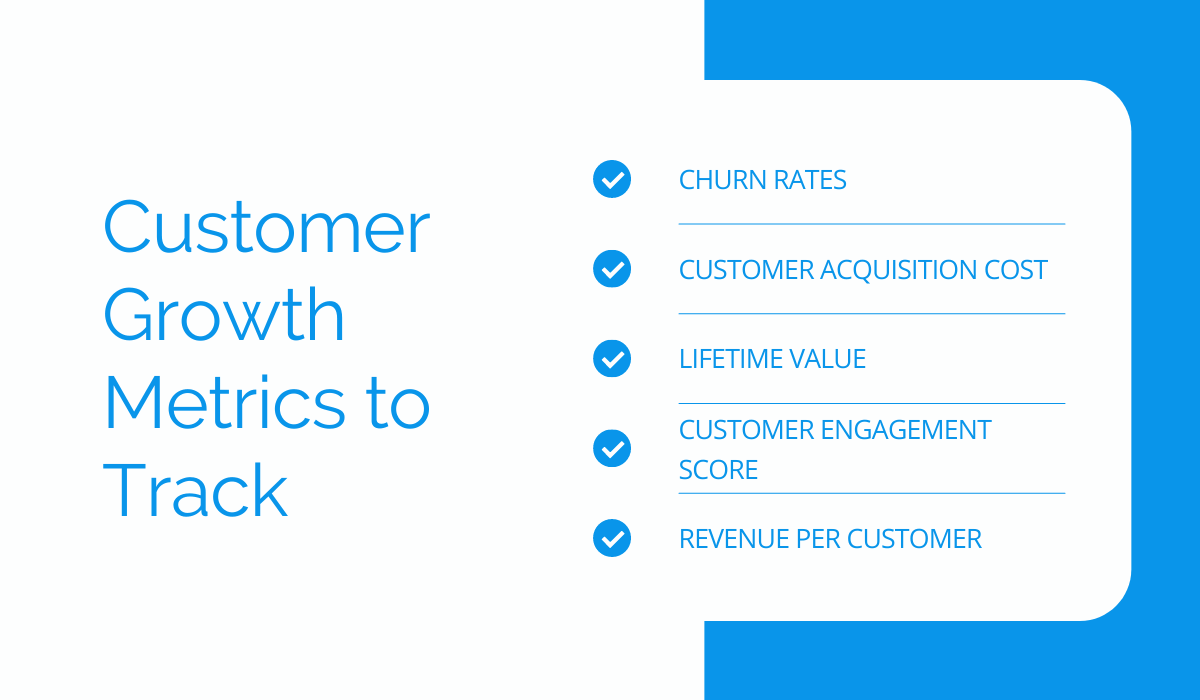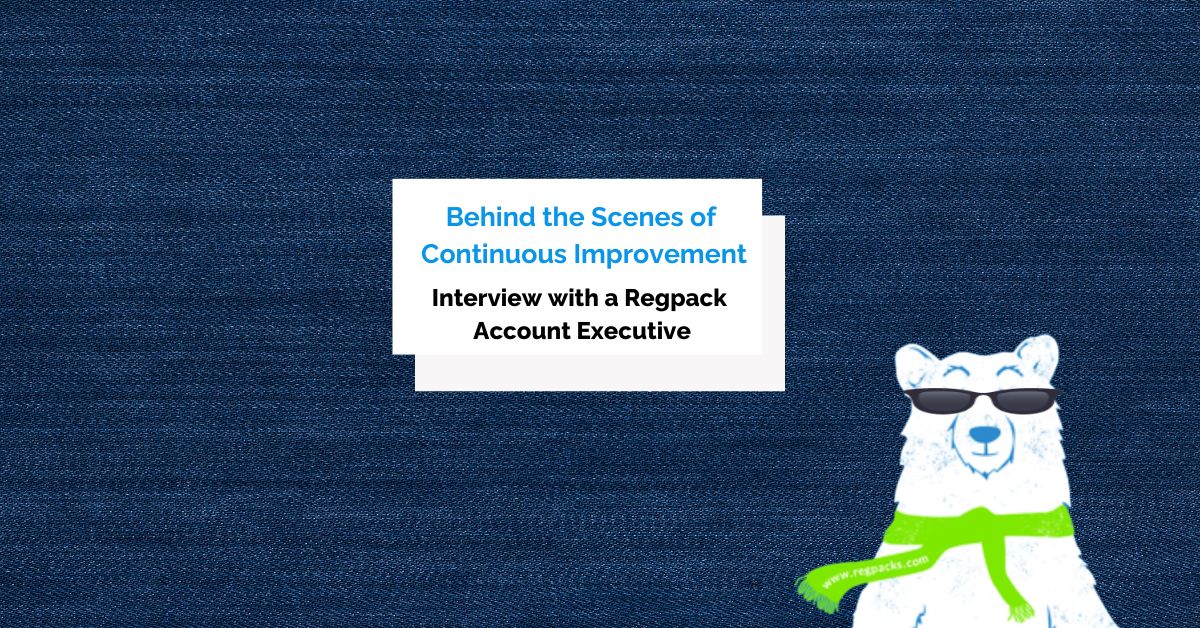Customer growth is the first step towards success in SaaS.
When you’re looking to improve your acquisition rates, the trick is to find the right balance between the right marketing strategies and the costs they incur.
How you approach customer growth depends on your company’s needs and the product you offer, but some general advice applies to all SaaS businesses.
Here are some essential things you should know if you want to attract more customers.
Jump to section:
What Affects Customer Growth
Key Strategies for Encouraging Customer Growth
How to Measure Customer Growth
What Affects Customer Growth
Numerous factors affect customer growth, but the most significant ones for any SaaS product are sales, pricing, marketing, and product/market fit.
Let’s go over each of those.
Increasing Sales
If you effectively nurture your leads, you will increase sales.
The best way to do this is to hire an excellent sales team and create a straightforward sales strategy.
Your team has to keep the company’s business plan in mind and push your vision to the customers.
Depending on your product and target audience, you will have to implement a variety of sales strategies. This is especially true if you have both B2B and B2C products.
If the members of your sales team specialize for each segment of your target audience, you will have better acquisition rates.
Your sales team should create the best customer experience to increase sales.
Emphasizing the benefits in the customer success journey should be at the forefront of any sales strategy.
Keeping short sales cycles is another way to acquire more customers.
The most common methods that great sales teams use are optimizing email campaigns and giving value-focused demos.
The combination of a great sales team and a carefully constructed sales strategy will ensure customer growth.
Pricing
The price you set for your product will affect your growth.
Don’t be one of those companies that pay minimum attention to your pricing when it’s the most impactful thing on your revenue and customer growth.
Enticing products can only do so much if they’re not combined with the right price.
According to Profitwell, correct monetization can impact your acquisition 8x and double your ARPU.
It will take some time to research what your customers are willing to pay, but once you find the right balance between value and profit, you can quickly scale your business.
Use the data you gather from your existing customers and by conducting market research to optimize your pricing.
Most companies begin by offering a starting price and setting discounts and other special offers around it.
Then you can slowly modify and align your value to what your customers need.
Creating different tiers can help you create packages for customers with different needs and budgets, and you can always know that you’re matching your value with the right price.
Price optimization starts with market research and knowing your customer base.
Marketing
SaaS marketing can be challenging.
You have to think about the continually changing SaaS market environment and targeting the right customers with niche needs while using language that makes sense to wider audiences.
Marketing strategies start with a great product and an excellent service.
Then, you should use the right channel to attract customers. Two of the most popular marketing channels nowadays are influencer marketing and SEO.
Influencer marketing refers to enlisting people who already have large audiences to act as your advocate and promote your products.
They attract audiences with niche interests who are more likely to try your product and find value than paying someone with a very diverse customer base.
If you use this strategy, choose micro-influencers.
They are more budget-friendly, and their engagement rates are usually higher than those with a higher number of followers.
Also, look into tech discovery channels that can provide you with the right audience.

SEO has been an effective way to grow businesses through search engines organically. Almost 31% of organic converting traffic comes from Google searches.
Still, these days, you have to combine your SEO with excellent content.
Informative and educational keywords are what buyers are utilizing these days to find what they need.
More and more companies are focusing on producing quality content to leverage their marketing strategies.
Follow in their footsteps to raise awareness about your product by providing educational and helpful content.
Influencer marketing and SEO are your best marketing strategies for customer acquisition.
Product Market Fit
Having the right product for the market will ensure wider product adoption.
When you start developing a product, think about how many people are going to use it. The more people find value in it, the better your bottom line will be.
Start with in-depth market research. Discover what your potential customers need so you can find the right solutions for them.
You can start by catering to a smaller customer base.
Later, when planning to add new features, research the market again to find out if your existing customers need it and if new customers might be enticed to try it out.
Don’t stop at just getting people to ‘try out’ your products.
You need to make something that they will use regularly and for a long time to maximize the recurring revenue.
Finding a good product/market fit can further help you attract potential investors who will need proof that your company will be profitable in the long run.
Whatever you do, you should always customize and improve your product based on your target market. In that way, you ensure customer retention and the usability of your product.
Solving real problems for your customers ensures scalability for your business.
Key Strategies for Encouraging Customer Growth
SaaS companies have to be customer-focused to increase growth.
This means prioritizing personalization, creating an effective customer experience, and setting the right expectations.
Start with segmenting your customer base and study their behavior.
1. Choose and Segment the Right Customers
Target the right customers to encourage growth.
Attracting a lot of customers is great, but reaching customers you can keep for a long time is better.
Having the right customers benefits you in a lot of areas of your business, from lowering your churn rates to helping you achieve higher LTV.
Also, having the right information about your customers’ individual needs can help you create better products and experiences to convince them to keep using your product.
Then, you can use this information to find others who might benefit from your service.
If you want to have relevant and precise data, you should segment your customers based on criteria that will leverage your marketing strategy.
Here are the most common ways of segmentation:
- Industry
- Usage behavior
- Geographical position
- Size of their business
- Type of contracts
How you segment your customers will depend on your company’s goals and needs. The most important thing is to use this data to offer the right services to the right customers.
You can identify premium accounts and plan your customer success strategy for different types of customers.
Further segmentation based on demography and culture can help you widen your customer base for international expansion, while also helping you localize your marketing strategy to appeal to specific customers in those new markets.
There are many benefits to branching out to previously untapped markets.
These less-targeted countries have more organic traffic because they search for products with intent, which also means you have better chances of promoting your product without much competition.
You can begin to predict their behavior and needs to elevate customer experience and extend their expectations.
Each customer will get a personalized experience if you properly segment your customer base.
2. Find the Most Effective Lead Generation Channel
Choosing the right lead generation channel will help you target the right customers with the least amount of effort.
Use your resources to raise awareness about your product in the right lead generation channels.
According to Content Marketing Institute’s annual report, the most effective are email marketing, SEO, and social media.
Email marketing is the only channel that has remained effective since the very beginning of online marketing.
A new method in email marketing includes email automation that connects your customer database and sends emails based on customer’s in-app behavior.
In this way, you can send relevant, timely, and personalized emails to increase growth.
We’ve already covered one aspect of using social media to encourage growth (influencer marketing).
We will emphasize its importance with the latest research that suggests that 44% of online users use social media when looking for brand information.
You can rely on other people to promote your products, but if you don’t have dedicated social media accounts for your company and products, you’re missing out on great acquisition opportunities.
Next, content marketing is one of the most challenging but most effective ways to nurture leads.

The aforementioned Content Marketing Institute report reveals that in 2021 60% of SaaS companies used content marketing to acquire new customers, with 31% of them finding success.
Successful content marketing results in better LTV and conversion rates so investing in it is more than worth the cost.
Your primary focus should be to create exciting content that your customers will benefit from and reach through search engines or social media.
Create different types of content to reach a wider audience: blogs, videos, podcasts, and infographics. See what performs best and attract the right customers. To properly plan and organize your content, you will need a good CMS such as WordPress for your blog articles. You can do a quick WordPress hosting comparison to find the one that works best for you and build your own system.
Find the right lead generation channel to find your ideal customers.
3. Set the Right Expectations
When you fail to deliver on expected services, your customers will leave.
Effective customer experience rests on the right match between expectations and great service.
The customer’s relationship with your company starts with onboarding.
If you provide a seamless and enjoyable experience that matches their expectations, you’ve created a happy customer.
It’s no wonder everyone is writing about the importance of a good onboarding process.
You must teach your users about your product, but you also need to emphasize the benefits you promised in your marketing campaign.
Expanding on that, when you have good communication with your customers, you can solve their problems and manage their expectations.
This means that you should make it clear what you can and can’t do for your customers.
The worst thing is to promise and under-deliver.
Transparency and open communication allow you to work through obstacles and better define success.
Another thing to keep in mind is that all of your departments that have a role in developing customer experience should be aligned.
Finally, don’t cheat your customers.
Losing trust is the easiest path towards churn and fertile ground for ruining reputations and lowering acquisition rates.
Work with customers to define their goals and set the right expectations.
4. Study Customer Behavior
Improve your growth efforts by studying customer behavior.
We already mentioned that customer segmentation and analyzing their behavior are essential. But what does that mean?
Searching for your ideal customer can be challenging since they can reach you from anywhere in the world, and you don’t have direct contact with them.
The customers of today are very diverse, and their interests are getting more specialized.
Generally, however, they share these features:
- Suspicious of over-advertising
- The Internet is their primary problem-solving tool
- Value exclusivity and novelty
- Prioritize security in online payment
- Concerned about sustainability
- Want connection with products they consume
- Value good price to quality ratio
- Immediate access is important
Their demands are increasing, which means marketing to them is becoming more nuanced and personalized.
How to understand this diverse audience with different needs and create a product that will satisfy them?
You can use your online presence to focus on modern sales processes that will ensure you garner the attention of people willing to pay and use your service.
There are three things you can start with to learn more about your target customers.
The first step is a good onboarding process.
Look into users who don’t finish their onboarding successfully. Find out what their problems are to assist them and help them find value immediately.
Website optimization is next.
Improve your user experience with a great website and landing pages to drive ideal customer behavior. This can also affect platform stickiness.
Finally, track the usage rate when you introduce new features. Are they providing more value to your customers?
When you properly study customer behavior, you can use this data to leverage customer engagement and growth.
5. Believe in Your Product
Prove the value of your product to customers.
The core goal of your marketing strategy should be to convince leads that your product is the right solution for their needs.
The best way is to provide evidence for those claims. Send the right message about the usability and value of your product through social proof, testimonials, and case studies.
Reviews influence people’s buying decisions.
They want to check if the message is too good to be true, and looking into other people’s direct experience can further convince them to press the “buy now” button.
Testimonials are about context and specificity.
Ask your current customers how specifically your product has improved their workflow or other relevant areas of business.
You’re looking for short and direct reports on their experiences.

For more detailed proof, use case studies.
You can include real data to support your claims and show how other people reached their goals with your product.
Finally, having a good community of advocates who will spread the good word about your products can plant the seed for customer acquisition.
Persuasive testimonies from real people who use the product might be more effective than paid promotions.
Don’t forget to reward your loyal advocates for leveraging their positive experiences.
Use your current happy customers to acquire new ones.
How to Measure Customer Growth
After you’ve implemented some of the key strategies, now is the time to measure how successful they are.
There are several key metrics that you can use to measure customer growth, and that can give you a comprehensive picture of the state of your customer base.
First, look into your customer churn rates.
This will be a clear indicator of how many customers you’re retaining in your sales funnel.
SaaS churn rates increase with the growth of the customer base, so seeing large churn numbers shouldn’t worry you too much.
Related to growth is your CAC (customer acquisition cost).
It’s beneficial to find the right customers who will stay with you for a long time so you can recuperate from acquisition costs and make a profit.
Knowing how many months until you can recover is essential to predict your growth.
CAC can also help you identify if some customers are worth their cost and push you into new markets with better opportunities.
Once you find the right customers, you must understand their customer LTV. That way, you can measure how much revenue (and growth) you can expect from a customer before they churn.
Also, it can show you which marketing channel was the most successful in acquiring the most valuable customers.
Another metric you can use to measure your growth is the customer engagement score.
It’s a simple metric that you can use to measure how much value your customers get from using your product.
With it, you can calculate how regularly your customers use your product, so you can predict churn or identify upselling opportunities.

The final metric you can use to measure customer growth is revenue per customer (ARPU).
If you offer multiple products, you can identify your most valuable offerings. In that way, you can target customers who will use your highest-paying product and generate more revenue.
By calculating ARPU, you can then focus on growing the customer base of specific products.
Valuable doesn’t necessarily mean the product with the highest price. Sometimes you can acquire more customers with your middle or lower costing product if you provide the right value.
Look into the right metrics to shift your focus on targeting the best customers.
Conclusion
If you have the right product and the right strategy, you can improve your customer acquisition rates.
First, you should know the main areas that affect customer growth so you can outline your strategy.
When you’re familiar with your customer’s needs and personalities, you can target them with the right messaging and provide prices they can’t refuse.
Your next move should be finding the best lead generation channels to attract more valuable customers with high LTV and decrease your churn.
To keep your existing customers, think about the expectations you’re setting and never break your promises.
This is an excellent way to create loyal customers who will believe in your product and provide great reviews you can use to attract new customers.
Finally, to know if your strategies worked, you have to track the right metrics. Only then can you make changes and build your business even more.


















